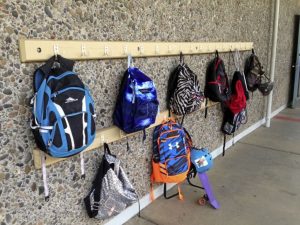Younger adults continue to be a significant driver of Los Angeles County’s stubbornly high coronavirus case rate, with those under 50 accounting for almost three-fifths of all confirmed infections, officials said this week.
While not a new development — those between the ages of 18 and 49 have had the highest number of cases throughout the pandemic, according to the L.A. County Department of Public Health — officials said the continued prevalence underscores that the disease can strike anyone, and that personal decisions on adhering to infection-prevention guidance will dictate when the county can further lift restrictions on businesses and public facilities.
Roughly 58% of the county’s cases have been in that age group, according to public health data.
“It’s our younger groups that are keeping our case counts high, but we also see that people of all ages can, unfortunately, become tragically ill, and some people will pass away,” L.A. County Public Health Director Barbara Ferrer said.
While those who fall seriously ill still tend to be older, Ferrer said patients between 18 and 29 now account for more than 10% of hospitalizations countywide, double the rate seen in mid-May.
About 722 COVID-19 patients were hospitalized in L.A. County as of Monday.
Officials have previously said the prevalence of cases among younger adults could be because they may be more likely to socialize outside their households, believing their youth will shield them from the disease’s impacts.
Of particular recent concern are private gatherings, especially if attendees aren’t adhering to physical distancing guidelines or wearing face coverings.
“We still have widespread community transmission,” Ferrer said. “That means it’s easy for people to get infected when they are gathering, even in small groups.”
However, even if those who are infected do not ultimately suffer severe symptoms, continuing circulation of the virus will block L.A. County from moving toward a wider reopening, health officials warn.
The county remains in the strictest category of the state’s four-tier reopening system — Tier 1, or purple — because it continues to report more than seven new cases per 100,000 residents each day. That means schools, many businesses and public facilities either cannot operate indoors or can do so only at a strictly limited capacity.
Unless that case rate drops, the county won’t be able to move into a less restrictive tier.
“We cannot afford to have more cases here in L.A. County. We are still in the purple tier because we have widespread community transmission,” Ferrer said. “I know people are impatient, and I know people want to get us to a place where everyone gets back to school but … we would need to get to Tier 2, and that means a concerted effort over the next upcoming couple of weeks to reduce our rate of community transmission. That’s going to take all of us.”
That’s especially important, officials say, as other states contend with new surges of the coronavirus — a danger that California faces as well.
“This is what we anticipated, moving into the colder season, moving into the season where more of us are moving inside, moving into a season where more of us begin to mix and come back … for the holidays,” Gov. Gavin Newsom said Monday. “This is an area of obvious and real concern, and that’s why we’re being very sober and, forgive me, stubborn about some industries in the state.”
There have been roughly 880,000 confirmed coronavirus cases in California — the most of any state — and nearly 17,000 deaths. More than 289,000 cases and almost 6,900 fatalities have been in L.A. County.
Another challenge facing the county is people not cooperating or connecting with contact tracers — whose job it is to collect information so health officials can identify possible infection sites, as well as notify those who have shared space with someone who has tested positive so that they can take precautions to avoid exposing others.
Between 65% and 70% of confirmed cases and contacts have completed interviews since September, according to Ferrer. But that means roughly a third have not.
“This does continue to thwart our efforts to reduce community transmission, since a large number of people are missing information about what they need to do to protect themselves and others from spreading the virus,” she said.
Identifying and informing those who have come into contact with a confirmed case is essential, public health officials say, because those people may unwittingly become vectors for the virus — carrying it with them even if they’re not experiencing symptoms.
“This virus is very present in our communities, at our worksites and in all of our beautiful public spaces,” Ferrer said. “Protecting yourself and others reduces transmission of COVID-19, it does prevent people from becoming seriously ill and it saves lives.”


















